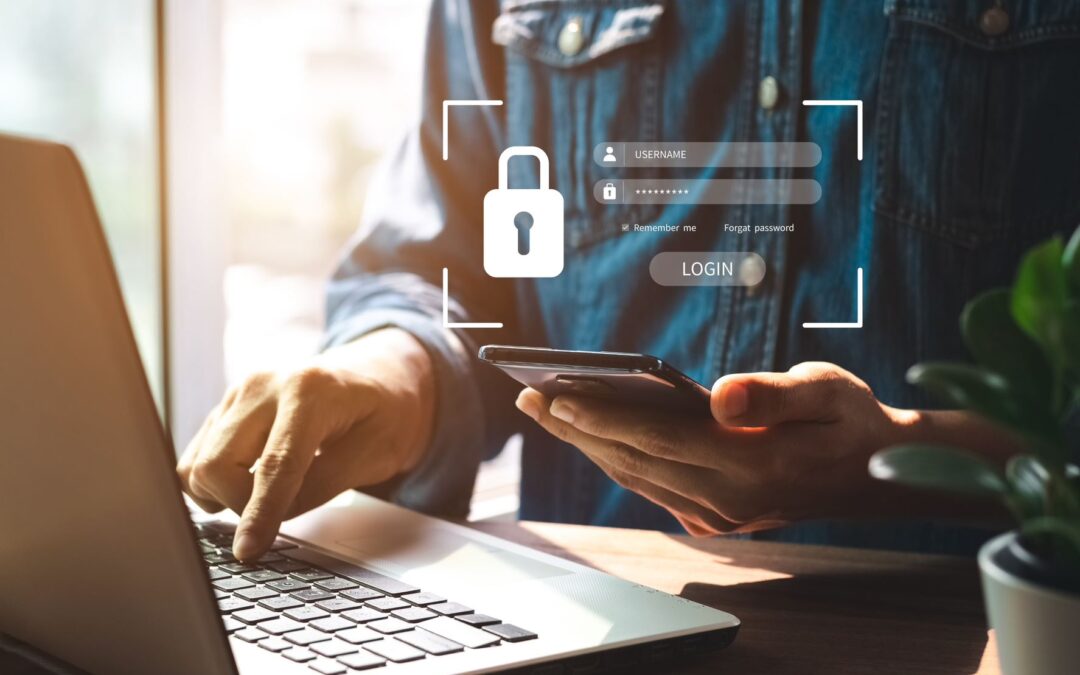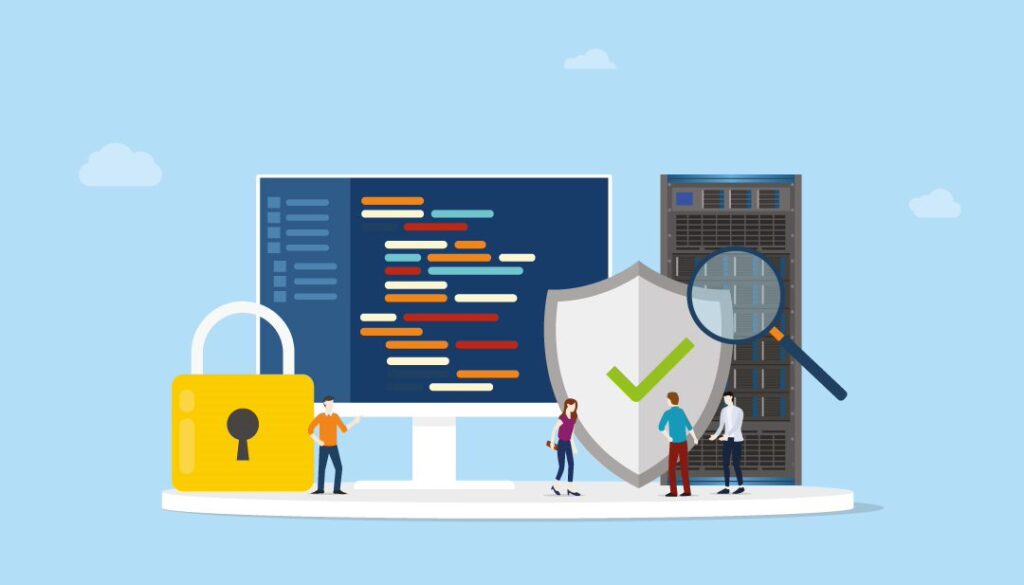SharePoint is one of the most widely used platforms for business collaboration. However, its growing popularity also implies increasing its security threat landscape. SharePoint teams store vast amounts of sensitive information, and security breaches or unauthorized access can cause significant damage to businesses. In this blog, we have compiled a list of tips to help secure your SharePoint site. Learn why SharePoint security is critical in 2023 and how our tips can help you secure your data.
Tip #1: Adjust External Sharing Settings in the SharePoint Admin Center
Adjusting the external sharing settings in the SharePoint Admin Center is an essential step in securing your SharePoint site data. Enabling Advanced Security for SharePoint sites and restricting access to specific administrators and users with specific email addresses can also increase security.
Note that You must be a Global Administrator or SharePoint Administrator in Microsoft 365 to change the sharing settings for a site.
Read more: How to Create and Structure a Good SharePoint Site?
Tip #2: Limit External Sharing to Specific Domains
Limiting external sharing settings adds an extra layer of security to your SharePoint sites. SharePoint allows you to block specific domains. This setting is available at both the tenant and site levels.
Note that external sharing for all other domains will be blocked if you enable sharing for one or more domains. Conversely, if you block one or more domains, the other ones will be allowed.
Tip #3: Assign Custom Permissions to SharePoint Groups (Owners, Members, Visitors)
Assigning ownership and managing access to owners and members reduces the risk of data breaches by ensuring that only authorized personnel have access to certain documents.
Restricting visitor access to your SharePoint sites will also prevent accidental or intentional dissemination of confidential information.
Tip #4: Appoint One Administrator Per Site or Site Group
Limiting the number of administrators per SharePoint site or group to one is a great way to safeguard sensitive data and files and prevent unauthorized access. You can easily add or remove site admins via the SharePoint Admin Center.
Tip #5: Set Admin Sharing Link Type and Link Permissions
To ensure only authorized users can access your SharePoint site, set the admin sharing link type to “SharePoint Open.” It’s also essential to ensure the site owner has complete control over link permissions to prevent unauthorized access to data or files.
An admin can use Windows group policy settings to restrict user access to certain parts of the site, employ web authentication and Two-Step Authentication, and use Active Directory Rights Management Services (AD RMS) to manage access to SharePoint content and files.
Tip #6: Check the Access Request Feature
Use the access request feature to manage who has access to specific areas of your SharePoint site. The feature controls who can view, edit, or delete files on your SharePoint site.
Access Requests can be configured to go to the site’s owner of an email address. Additionally, you can use the content security policy feature to restrict which websites users can visit from your SharePoint site.
Tip #7: Indicate Network Location
When configuring your SharePoint site, it’s crucial to indicate the network location to secure it from malicious attacks. Configuring your site to use SSL certificates and HTTPS protocol also adds an additional layer of security.
Tip #8: Use Microsoft 365 Security Defaults
Microsoft 365 Security Defaults provide basic security settings that can help protect your data from unauthorized access. With Microsoft 365 Security, you can configure user authentication and authorization requirements, monitor user activity, and track compliance with security policies.
Advanced features like Security Groups help you secure your SharePoint site against malware attacks and detect and prevent unauthorized access.
Tip #9: Implement Multi-factor Authentication (MFA)
With the increasing threat of cyber attacks, implementing MFA should be a top priority for any organization looking to secure its SharePoint site in 2023.
MFA requires users to provide two or more forms of identification before accessing the site, adding an extra layer of protection. Enabling MFA is a simple process; you can use standard login methods, such as passwords and PINs, alongside apps that generate unique codes for each login attempt.
Tip #10: Use the Virus Detection Feature in SharePoint Online
SharePoint Online provides a range of features to help you secure your site. One such feature is the virus detection option, which allows you to scan your SharePoint site for any viruses that may have infected it.
This feature is useful for scanning files and content on your site to prevent malware infection and potential unauthorized access.
Tip #11: Use the Encryption Feature in SharePoint
Encrypting your SharePoint content can prevent data breaches from unauthorized users.
SharePoint offers encryption features for access security, data security, application security, physical data center security, and network security for in-transit data. SharePoint Online also offers file- and disk-level encryption to secure data at rest.
Tip #12: Adjust Your Site’s Sharing Settings
One of the most effective ways to secure your SharePoint site is by adjusting your sharing settings. Use Windows permissions to limit access to specific folders and documents within your SharePoint site.
Strengthen your site’s network by configuring it properly and restricting sharing of specific folders to protect sensitive files on your SharePoint site.
Tip #13: Adjust Settings in Microsoft Teams
If SharePoint and Microsoft Teams are integrated with your organization, some settings and permissions will need to be managed in the Settings menu in Teams. Teams-connected sites will usually include additional information indicating the connection to Teams.
You will notice that certain settings will not be editable from SharePoint. You can configure settings for site permissions, sensitivity classification, and private channel membership in Teams, while site name, site description, and Hub association settings can be accessed within SharePoint.
Recommended reading: What is The Difference Between SharePoint And Microsoft Teams?
Tip#14: Restrict Access to SharePoint Folders
Using SharePoint security features to control who can access folders and content is a great way to mitigate security risks, preventing unauthorized access to sensitive information and reducing the risk of data breaches.
Tip #15: Restrict Access to SharePoint Documents
Limiting user access to SharePoint documents is a great way to enhance security. To restrict access to specific documents, you can configure access in settings, which allows you to set individual users’ permissions for specific files and folders.
You can also use SharePoint security templates to restrict access to particular pages and files.
Documents sharing is one of the main benefits of using SharePoint. Thus, it’s important to secure and use correct access settings.
Tip #16: Train Your Teams to Use SharePoint Security Best Practices
To secure your SharePoint site, employees must understand the importance of protecting sensitive data and using authentication features to access SharePoint sites using their work identities.
Site administrators must educate team members on configuring access controls to limit access to specific files and folders and the basis for using auditing tools to track user activities and incidents.
Train your team on utilizing encryption and malware detection and removal tools. Teams should also be trained on best practices for information governance in SharePoint environments, such as privacy policies, archiving strategies, data loss prevention solutions, incident response plans, etc.
Takeaway on SharePoint Security
SharePoint security will be critical in 2023 and beyond as data breaches and cyber attacks continue to rise. Implementing the security tips in this blog will go a long way in keeping your SharePoint site secure. Ultimately, you must train your teams to follow security protocols and manage permissions to ensure that all aspects of your digital workspace remain secure.
Frequently Asked Questions on Data Security for SharePoint Teams
Many organizations rely on SharePoint sites to store and share essential data, which makes them vulnerable to cyber-attacks. To protect your SharePoint site, you need to know what types of threats it faces and how to prevent unauthorized users from accessing it.
The following are some frequently asked questions on SharePoint security:
How does SharePoint Security work?
SharePoint security is a comprehensive solution that can help protect your site from attack. The SharePoint environment relies on multiple layers of protection which work together to ensure only that authorized users can access your site’s content.
SharePoint security can be complex, but it’s essential to understand how it works in order to keep your site secure. The best way to do this is to stay up-to-date with current trends and best practices.
What are the Security Levels in SharePoint?
Security levels for SharePoint teams range from minimum to maximum protection. The minimum level of security provides limited protection for your data. It allows limited access to users, while the maximum security level provides the most comprehensive protection for your data and only allows authorized users access.
Security levels for SharePoint teams can be upgraded as needed to provide the optimal level of security for your site.
To ensure the safety and security of your SharePoint site, it is important to take a number of steps, including implementing best practices for sharing data, using strong passwords, and regularly backing up your data.
These precautions can help protect your site against hacking or data theft threats. Keeping up with industry standards and guidelines will also ensure your site remains secure.
How do I make SharePoint secure?
One of the most important things you can do is to regularly install security updates for SharePoint to help address any system vulnerabilities. Another key step is configuring user permissions so that only authorized users can access sensitive data.
Encryption is also an effective tool for securing your SharePoint site, as it can make it harder for attackers to intercept and steal data. By following best practices and utilizing proper precautions, your organization can ensure its SharePoint site remains secure in 2023 and beyond.
How Do I Adjust Permissions On My SharePoint Site?
Regarding SharePoint security, adjusting permissions for SharePoint teams on your site is a key step in protecting your data and ensuring that users have the appropriate access. To adjust permissions on your SharePoint site, you can use the site settings menu to manage users and groups and set up custom permission levels.
In addition to adjusting permissions, you can use features such as user-defined policies to enhance your site’s security further.
Is SharePoint Safe for Confidential Information?
SharePoint offers several features to secure your confidential information, such as access controls, encryption, and audit trails. However, note that these features should not be relied upon for storing highly sensitive or confidential information.
SharePoint should also not be used as a data backup solution. Instead, organizations can use dedicated backup solutions designed specifically for this purpose.
What are SharePoint security risks?
The most frequent security risks for SharePoint teams include unauthorized access, data theft, and cyber-attacks. To protect your site, it is critical to understand how these risks could occur and implement appropriate measures to protect your SharePoint sites.



